Yankee Jim Tangles With Rudyard Kipling
Department Literary Lode
Yankee Jim had several decades of adventures behind him when travel writer Lewis Ransome Freeman stopped by his cabin in 1902. Freeman, who had read Rudyard Kipling’s descriptions of the famous toll road operator, was eager to meet him.
Yankee Jim, whose real name was James George, was about 22 years old when the discovery of gold in Bannack attracted him to Montana in 1863. He prospected for gold in the area that became Yellowstone National Park as early as 1866 and spent time in the Yellowstone Valley north of the park as a meat hunter supplying the Crow Indian Agency.

In 1873, he took possession of a toll road through the rugged canyon that still bears his name north of the then brand new Yellowstone National Park. A group of businessmen from Bozeman and Helena had begun building the road in 1871. They were planning a system of toll roads linking all the major sights in Yellowstone Park and asked the U.S. Congress for an exclusive right to provide roads and hotels there. When a bill to grant the monopoly failed, the businessmen abandoned their project, and Yankee Jim took over the road.
People’s opinions of Yankee Jim diverged widely. A city official from Spokane called him “the most luridly picturesque liar in the Northwest,” while a minister described him as “one of the gentlest and most saintly characters he ever expected to meet outside of heaven.”
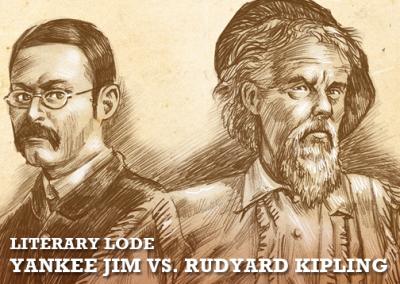
The Park County Sheriff explained Jim’s split personality this way: “It all depends upon whether old ‘Yankee’ is drinking or not. He puts in on an average of about five days lapping up corn juice and telling the whoppingest lies ever incubated on the Yellowstone, and 10 days neutralizing the effects of them by talking and living religion.”
Rudyard Kipling was just 24 years old when he met Yankee Jim while traveling to England from India in 1889 and publishing letters about his travels in newspapers. The letters were collected in Kipling’s 1899 book, From Sea to Sea: Letters of Travel. By then Kipling had already written several books and launched the career that would win him the Nobel Prize for Literature in 1907. From Sea to Sea contains a section about Yankee Jim.
Kipling said he was gazing out of his railroad car window at “the ideal trout stream below” as the train passed by the Yellowstone River in the Paradise Valley when a stranger advised him “Lie off at Yankee Jim’s if you want good fishing.”
The Northern Pacific Railroad had laid tracks within a few feet of Yankee Jim’s cabin by then. Kipling said that when the train stopped “I leaped literally into the arms of Yankee Jim.”
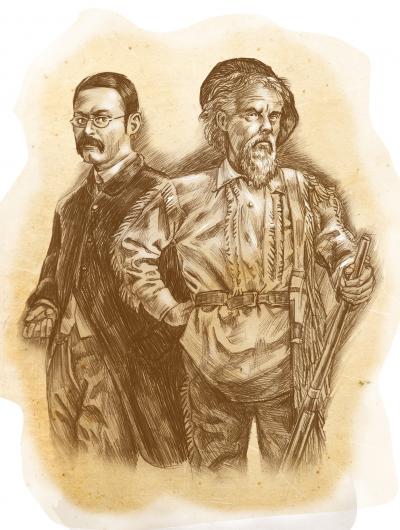
He described Jim, who was about 50 then, as “a picturesque old man with a talent for yarns.” Kipling admitted it was presumptuous to think “I might hold my own with the old timer if I judiciously painted up a few lies gathered in the course of my wanderings.”
“Yankee Jim,” Kipling continued, “saw everyone of my tales and went 50 better on the spot. He dealt in bears and Indians — never less than 20 of each; had known the Yellowstone country for years, and bore on his body marks of Indian arrows; and his eyes had seen a squaw of the Crow Indians burned alive at the stake. He said ‘she screamed considerable.’”
Such stories attracted Lewis Ransome Freeman to Yankee Jim in 1902. Freeman was like Kipling had been 13 years earlier when the English author visited Yellowstone Park. Both men were 24 years old and looking for adventures to write about.
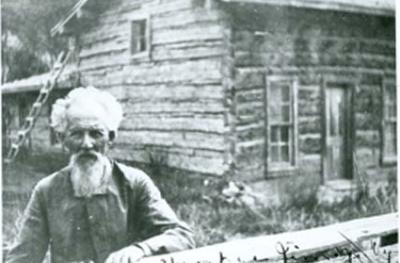
Freeman noticed “a kind of anxiety” in Jim when he approached the gray bearded old man. “I have known of you for years through Kipling’s account of you,” Freeman said. “I want you to tell me some of the Indian stories you told him.”
“I knew you’d ask that as soon as I saw you,” Yankee Jim said. “Every one asks it sooner or later.”
Then Jim threw himself back in his chair and looked Freeman in the face. “Young man, do I look like a man who would let a woman — white or Indian — be burned at the stake before me. Why my old Colt would have shot someone all of itself at such an outrage. He [Kipling] said I said, ‘She hollered considerable.’ What did you think of me when you read that? What have other people thought who read it?”
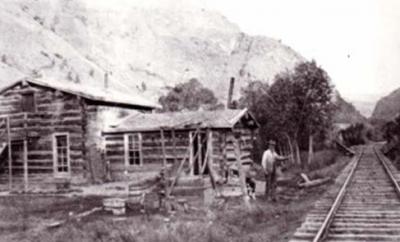
Yankee Jim continued his rant and asked why Kipling “couldn’t have called me by some other name if he was going to lie so?”
Yankee Jim told Freeman that half the people who stopped at his cabin had read about him in Kipling’s book and wanted to hear the story of the woman burned at the stake.
Freeman said Jim pulled a grimy copy of From Sea to Sea from a shelf above his fireplace and began reading a section about a young woman who was staying at his cabin when Kipling visited there: “She was California raised, the wife of a man who owned a stock farm ‘up the river a little ways,’ and, with her husband, a tenant of Yankee Jim’s shanty... She was beautiful by any standard of beauty, and... the trout she cooked were fit for a king’s supper.”
Jim said Kipling may have heard there were six-pound trout in the canyon — because there were — and “the woman he told about was beautiful enough, God knows, but simple-minded, never.”
The “gentle folk” Kipling described, Jim said, were “song and dance artists” who didn’t even pretend to be married. “That little Englishman knew all the time they weren’t ‘simple country folks.’”
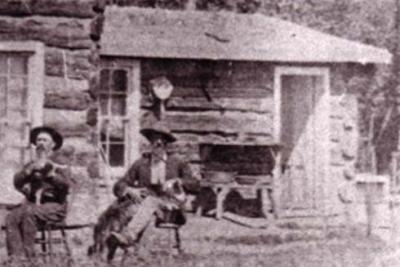
Jim said he figured that when Kipling “came around to write the book he thought that ‘simple country folk’ would show off in fine contrast living with the desperate old man who stood by while the squaw was burned, and so he lied about us all.”
Kipling thought Yankee Jim was a whopping liar too, but he said the old man told the truth about fishing in the Yellowstone. “He said it was alive with trout,” Kipling said; “Ye Gods, that was fishing.”
Yankee Jim lived in his cabin for 20 years after Freeman’s visit. As he aged his health deteriorated and he finally became a ward of Park County. In 1922, his brother took him to California where he died two years later.
RELATED VIDEO: Watch a short clip of Yankee Jim Canyon and trout:
Catching trout at a nice little fishing spot on the Yellowstone River in Yankee Jim Canyon
(Paradise Valley, MT 2/06/2015)
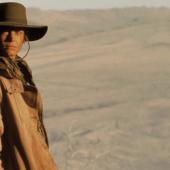
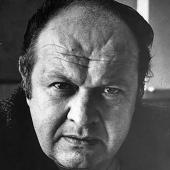
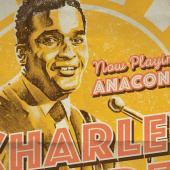
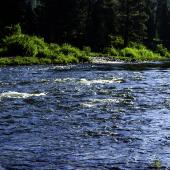

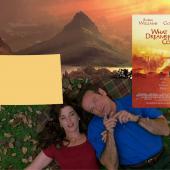

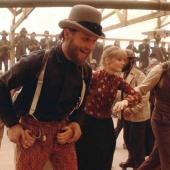
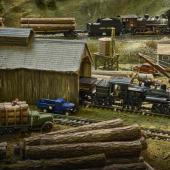
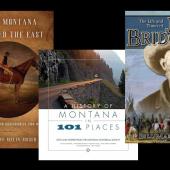
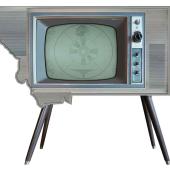
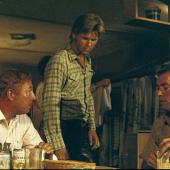
Leave a Comment Here